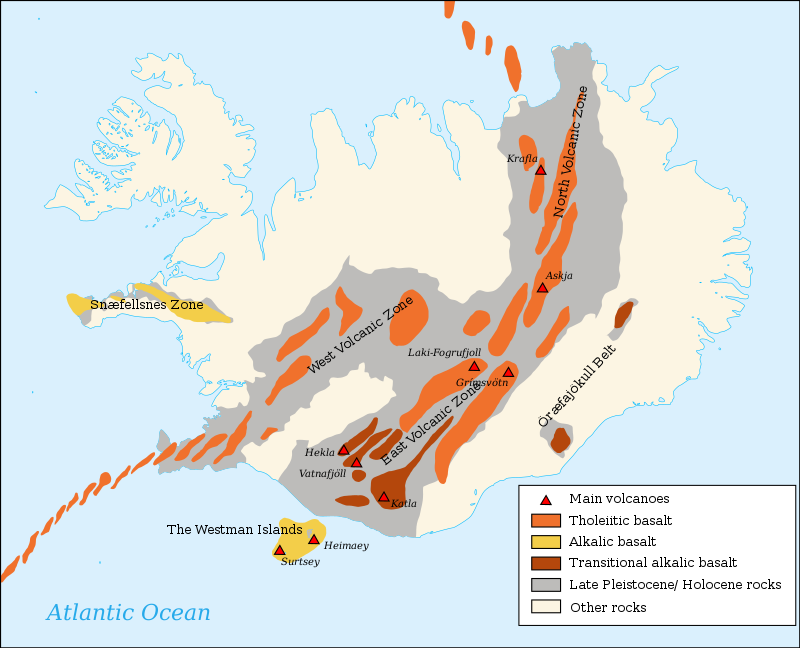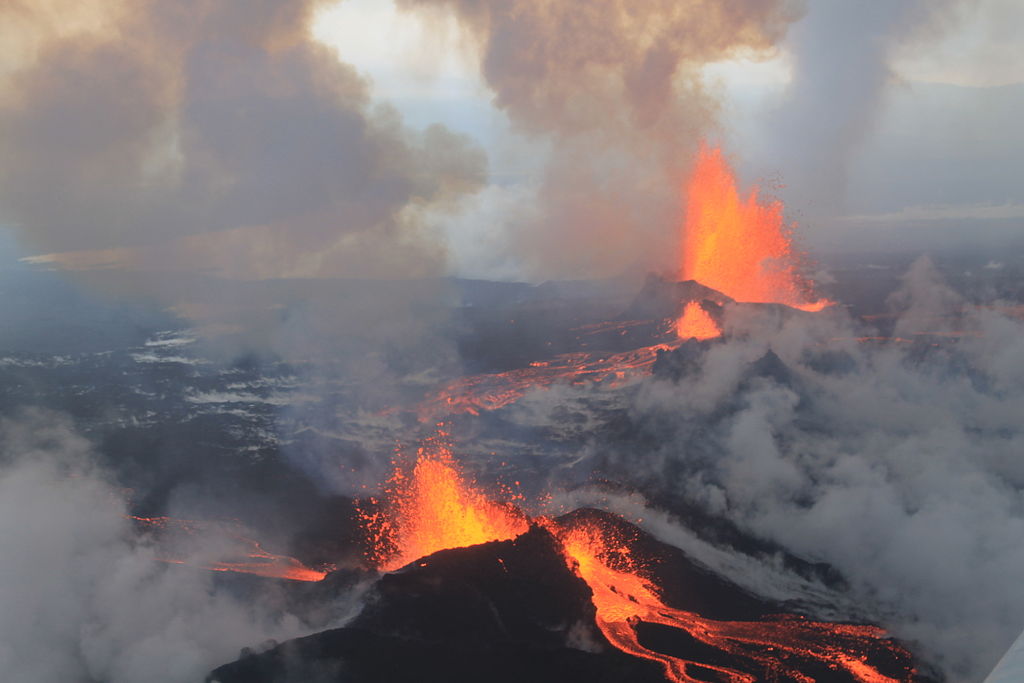Some of the Most famous volcanoes in Iceland
Most famous volcanoes in Iceland is Eyjafjallajokull because of its eruption in 2010. Other famous volcanoes are Katla, Öræfajökull, Bárðarbunga etc.
Mount Hekla has erupted 18 times, the last time it erupted was in 2000.
Iceland volcanoes names
Iceland has a large concentration of active volcanoes, as it is located on the Mid-Atlantic Ridge, a divergent tectonic plate boundary.
It has over 30 active volcanic systems and each volcano’s tectonic fissure systems and most of them also stratovolcano, shield volcanoes. The most active volcano in this region is Grímsvötn.
Below is the list of the most famous volcanoes in Iceland.
Volcanoes in Iceland facts
There are around 130 volcanoes in Iceland. The reason behind such a high number of volcanoes is its location. As this Iceland nation lies where two tectonic plates meet.
As the two tectonic plates are not fused, an extremely hot substance known as lava rises from inside.
Fagradalsfjall
Fagradalsfjall volcano is part of the Krýsuvík-Trölladyngja volcanic system on the Reykjanes Peninsula in southwest Iceland.
Katla volcano
It is one of the largest volcanoes in Iceland. It is situated to the north of Vík í Mýrdal and to the east of the smaller glacier Eyjafjallajökull.
Grímsvötn
It is located in Vatnajökull National Park, Iceland. Grímsvötn, a subglacial volcano, is located 140 km NE of Eyjafjallajökull volcano within the western region of the Vatnajökull glacier. It is a type of Caldera.
Hekla
Hecla, is a stratovolcano in the south of Iceland with a height of 1,491 m (4,892 ft). Hekla is one of Iceland’s most active volcanoes. It is the most famous and active volcano in the country.
Askja
It is an active volcano, situated in the remote part of the central highlands. The most recent eruption was in 1961. It is a type of basaltic.
Snæfellsjökull
Snæfellsjökull is a 700,000-year-old glacier-capped stratovolcano in western Iceland. It is situated in the most western part of the Snæfellsnes peninsula. It is present in the West Iceland glaciers.

Eldfell
Eldfell is a volcanic cone just over 200 metres (660 ft) high on the Icelandic island of Heimaey. Eldfell is a volcano in the Westman Islands, off the South Coast of Iceland, which famously erupted in the middle of the town of Heimaey in 1973.
Öræfajökull
It is an ice-covered volcano in southeast Iceland. Its type is Stratovolcano. It is shaped like a cone, with a large ice-filled caldera, and is 600-700 m deep. It has erupted twice once in 1362 and the other in 1728.
Eldgjá
It is situated in Landmannalaugar and Kirkjubæjarklaustur. Eldgjá is the largest volcanic canyon in the world, approx. It is an example of a shield volcano.
Hengill
It is situated in the southwest of Iceland, which is south of Þingvellir. It is a mountain that covers an area of 100 square kilometres. Geothermal energy is produced, which is a vital source of energy for south Iceland.
Torfajökull
It is a rhyolitic stratovolcano, caldera, and a complex sub-glacial which is located north of Mýrdalsjökull and south of Þórisvatn Lake. It last erupted in March 1477.
Vatnafjöll
Vatnafjöll is a 40 km (25 mi) long, 9 km (6 mi) wide basaltic fissure vent system that is located southeast of Hekla, Iceland. It last erupted 1200 years ago.
Esjufjöll
Esjufjöll is a small volcanic system and as such part of Iceland’s Oræfi Volcanic Belt. The subglacial Esjufjöll volcano located at the SE part of the Vatnajökull icecap, north of Öraefajökull, consists of the Snaehetta central volcano and a large caldera.
Ljósufjöll
Ljósufjöll is a fissure vent system and central volcano on the Snæfellsnes Peninsula in Iceland. The system has a length of about 90 km. It last erupted in 960 CE.
Prestahnúkur
The volcano Prestahnúkur is located in the west of the Highlands of Iceland to the west of Langjökull glacier.
Grímsnes
Grímsnes is a fissure or crater row volcanic system located in South Iceland, a relatively small volcanic system located SE of Thingvallavatn lake east of an en-echelon group of volcanic sites extending across the Reykjanes Peninsula.
It last erupted in May 2011.
Herðubreið
Herðubreið is a tuya in the northern part of Vatnajökull National Park, Iceland. It is situated in the Highlands of Iceland on the east side of the Ódáðahraun desert and close to Askja Volcano.
Kerlingarfjöll
It is part of a tuya volcano system of 100 sq. km. It has numerous hot springs. It is glacially dissected.
Hverfjall
Hverfjall also known as Hverfell is a tephra cone or tuff ring volcano in northern Iceland. Last erupted in 2500 BP.
Theistareykjarbunga
Theistareykjarbunga is a shield volcano in northeastern Iceland with two fissure vents called Theistareykjahraun and Borgahraun. It last erupted in 900 BC.
Kollóttadyngja
Kollóttadyngja is a shield volcano in the Ódáðahraun lava field in Iceland. Its height is 1,177 metres, and it has a diameter of 6–7 km.
Bláhnjúkur
Bláhnjúkur is a volcano in the south of Iceland. Its height is 940 m.
Trölladyngja
Trölladyngja is the biggest of the Icelandic shield volcanoes, reaching a height of 1,468 metres (4,816 ft) above sea level.
Helgafell
Helgafell is an inactive 227-meter-high volcanic cone located on the island of Heimaey in the Vestmannaeyjar archipelago in Iceland.
Búrfell
Búrfell is a 480 m (1,570 ft) basalt tuya located in Iceland.
Brennisteinsalda
The Brennisteinsalda is a volcano in the south of Iceland. Its height is about 855 m. It is situated near Landmannalaugar and not far from Hekla.
Conclusion
Iceland has around 130 volcanoes, and mostly it has stratovolcanos, which is a cone-shaped peaks. Also, there are shield volcanoes.
References
https://www.bookmundi.com/t/popular-volcanoes-in-iceland


I love that picture of the volcano erupting!!!!!